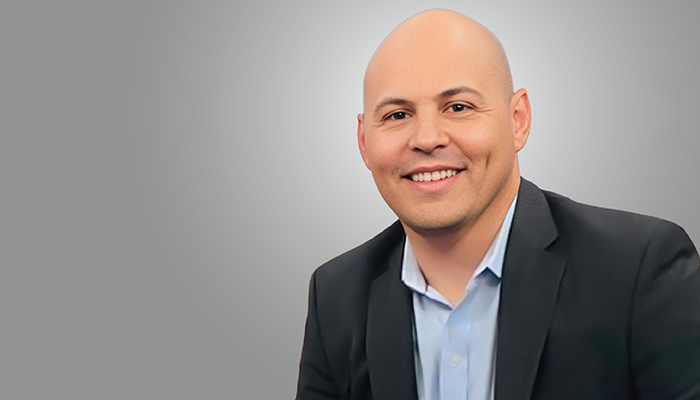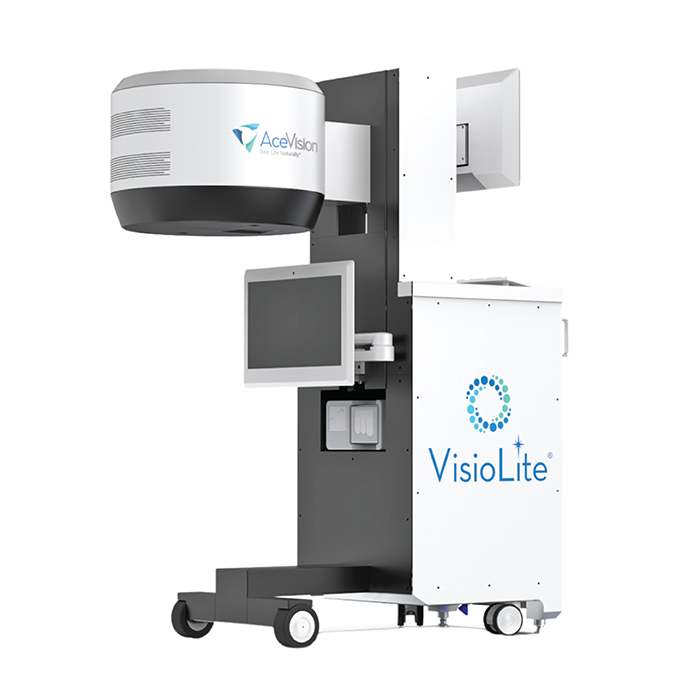
Alex Lopez. Credit: Images supplied by Ace Vision Group.
Can you talk about the loss of dynamic range of focus (DRoF) that occurs with progressive presbyopia and how it is currently treated?
DRoF is the ability of the eyes to dynamically change focus – automatically and on demand. It is the result of complex biomechanical processes involving ocular muscles and various moving structures (for example, the sclera, lens, zonules, and so on). The biomechanics of DRoF have been investigated and described extensively by several thought leaders and our founder and CEO, AnnMarie Hipsley. With age, the sclera becomes more rigid and the lens gets stiffer, decreasing the ciliary muscle force and causing a loss of DRoF that manifests as poor near and intermediate vision.
Presbyopia is typically defined much more narrowly and so is treated as a lens problem, ignoring all the other biomechanical forces underlying healthy DRoF. As one of the early signs of aging, loss of DRoF has a significant effect on patients, both functionally and emotionally. We know that many people are dissatisfied with the limited solutions now available, such as reading glasses or monovision. At Ace Vision Group, we see DRoF loss and presbyopia as untapped markets that the ophthalmic community can really change by working towards better solutions for our patients.
What does the laser scleral microporation (LSM) procedure entail?
Our device, the VisioLite laser, is an Er:YAG laser that is used to perform an in-office, minimally invasive laser scleral microporation (LSM) treatment. The laser creates a diamond-shaped matrix of transconjunctival scleral micropores in four quadrants of the sclera, at a depth of 85 percent. The treatment can be performed in the office. It only takes 10 minutes to treat both eyes, with active laser time of only six seconds per quadrant and four quadrants per eye. From the patient’s perspective, LSM is a convenient solution that is completely touchless. Digital software allows the doctor to set up a treatment plan that can then be automated, making the whole experience quick and easy for the doctor, staff, and patients.
What are the LSM procedures’ immediate effects on visual acuity – and how safe is it?
LSM is an extraocular procedure that does not penetrate all the way through the sclera, which makes it very safe. There is no impact on night vision, no increase in dry eye. Patients do not have to sacrifice distance acuity or quality because the treatment is outside the visual axis. In fact, the only side effect seen in a recent two-year study was occasional subconjunctival hemorrhage that resolved within two weeks (1). Following an LSM treatment, the microporation matrix is not visible to the naked eye, although it can be seen under surgical microscopic magnification. Patients can resume their daily activity immediately after treatment and most are reading 20/40 or better on post-treatment Day 1. In the two-year clinical study, patients reported high rates of spectacle independence and improved ability to perform near tasks throughout 24 months (1).
How does LSM work?
Crosslinking of scleral fibers increases with age. Although it is a natural process, this age-related crosslinking contributes to scleral rigidity and the loss of DRoF. In an LSM treatment, the Er:YAG laser is applied to the sclera to “uncrosslink” the scleral fibers. This makes the sclera more flexible, decreasing the force that is needed to shift the lens for near focus and restoring DRoF. The treatment is automatically titrated by the software based on the patient’s age and other factors. If an early presbyope has lost two lines of near vision, they can expect to get about a two-line improvement. And if they are more advanced and have lost six lines of vision, the treatment can restore six lines. This makes LSM an effective solution no matter where the patient is in their presbyopia journey – and no matter what their refractive error might be.
Once we commercialize, I think LSM will be an exciting treatment to offer those emerging presbyopes who are suddenly concerned about losing their quality of vision and who don’t want to start using reading glasses. Right now, there is very little to offer patients at that stage. Of course, we know that presbyopia and the age-related changes that contribute to the loss of DRoF continue to progress over time. LSM rejuvenates the vision that has been lost up to the point of the treatment, but it can then be repeated as patients continue to progress.
What’s special about VisioLite technology?
Our unique device is the first Er:YAG laser for an ophthalmic application and the first device designed to perform LSM! The system that we expect to commercialize combines the laser with a sophisticated eye tracker, real-time optical coherence tomography (OCT) imaging, and proprietary software. The eye tracker automatically aligns the device to the patient’s eye with no interface directly touching the eye. The patient is asked to fixate on a specific point, and then the laser treatment is applied, with OCT imaging throughout the treatment to continually verify the treatment depth for an optimal outcome.
What are the key challenges facing LSM adoption?
Disseminating new science around the biomechanics of the eye, how the eye functions to provide DRoF, and how aging alters that function is certainly a challenge. However, there is also a huge opportunity to innovate and create solutions that better serve the world’s 2.1 billion presbyopes. We believe the ophthalmic community will be open-minded to the science – especially because the presbyopia market is such a large untapped market.
We’ve seen other presbyopia treatments in the past that were not broadly adopted and failed in the marketplace, like the early presbyopia drops. But LSM has four significant advantages that will drive its success: safety, effectiveness, repeatability, and convenience. In short, we believe it has everything that doctors and patients are looking for in a solution to presbyopia. Other technologies have certainly set the stage for aging without readers and have helped to move the industry forward, but I think we are on the precipice of something that can truly treat the underlying problems in the aging eye to restore its dynamic range of focus.
Alex Lopez is Chief Commercial Officer at Ace Vision Group

References
- S Shah et al., “Dynamic range of focus recovery after laser scleral microporation in emmetropic presbyopes: 24 month pilot study outcomes,” British Society for Refractive Surgery (2023).
